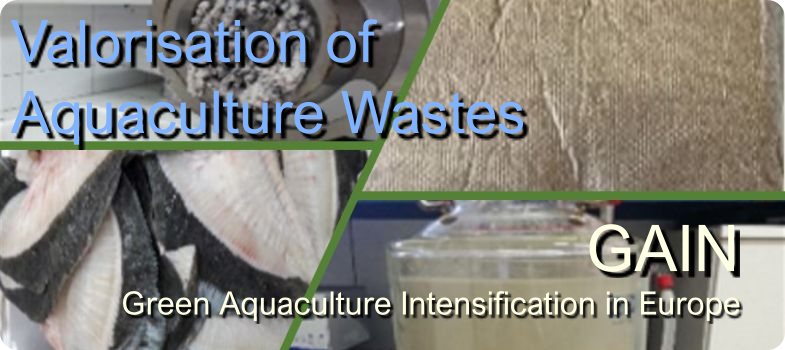What are peptones and marine peptones?
Biotechnological conversion of fish by-products is the process that transforms those wastes into high-added value compounds and products by means of microbial fermentation processes. As fish residues are substrates mainly rich in protein, these materials are potential sources of peptones useful as ingredients for microbial growth.
In this context, a peptone is a substrate based on proteins, composed of peptides and polypeptides of varied molecular weight, including free amino acids, and a small concentration of nucleotides, carbohydrates, and lipids. These protein materials are water-soluble, not thermally coagulable, and are obtained by acid, alkaline, thermal, or enzymatic hydrolysis of raw materials, mainly by-products from animals, vegetal, or microbial origin.
Commercially the name of peptones refers to the origin of raw materials or the enzyme used for producing them. Thus, we found for instance: (i) Gelatine peptone, obtained from the pancreatic (pepsin or trypsin) digestion and rich in glycine, proline, and hydroxyproline, (ii) Meat extract, produced from bovine residues (skeletal muscle) and with a high predominance of glutamic acid, (iii) Casitone, mild pancreatic hydrolysis of casein presenting high levels of glutamic, proline and tryptophan, (iv) Tryptone, is an exhaustive digest of casein by trypsin, (v) Yeast extract, soluble extract of yeast autolysates and rich in glutamic acid, tryptophan, and sugars, (vi) Soy peptone, papain digestion of soy flour including a high concentration of sugars, glycine and glutamic acid.
Peptones are the most important and expensive source of organic nitrogen in the microbial culture media. In many cases, 30–80% of the cost of the industrial bioproduction of vaccines, antibiotics, organic acids, etc., from microorganisms is due to the cost of peptones.
Marine peptones are peptones generated specifically from fish and seafood by-products, discards, and effluents, being aquaculture peptones obtained from fish farming wastes. Inexplicably marine peptones are almost commercially nonexistent even when viscera, heads, trimmings, and seafood effluents have shown to be an excellent substrate for peptone production.
Types of marine peptones
Different processes can be executed for the production of peptones from fish and seafood waste. These procedures are similar to those defined for the generation of fish protein hydrolysates. The most studied alternatives are:
1) Acid/alkaline digestion when marine substrates are hydrolysed by alkalis or acid reagents (NaOH, H2SO4, etc.). It is also known as silage.
2) Enzyme digestion, when a proteolytic enzyme, protease, is applied for the hydrolysis of waste. Two kinds of enzymes can be used: (i) endogenous protease from fish viscera –pancreas or pyloric caecum– employed as biocatalyst for the autolysis of fish substrates; (ii) exogenous protease added to the mixture of residues and water for the digestion of the marine by-products.
3) Thermal extraction, when a thermal process is applied (autoclaving) to a fish substrate: water mixture for protein extraction from solid to liquid phase.
